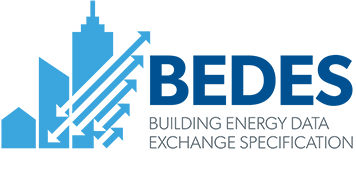Resources
| Term | Term Definition | Options | Unit of Measure |
|---|---|---|---|
| Charge Rate |
Charge per unit of resource. |
View | None |
| Current Flow Direction |
Direction associated with current related time series data |
View | None |
| Demand Ratchet Percentage |
Certain rate schedules incorporate demand ratchet percentage to ensure minimum billing demands based on historical peak demands. Billing demand in these cases is based comparing the month's demand and maximum of previous 11 month's demand times the demand ratchet percentage |
View | percent |
| End Use |
Resource end use. This can also be used to qualify a renewable energy that is generated on-site that has its own dedicated meter. This can be applied at the premises or individual system or equipment level. |
View | None |
| Grid Connection |
Indicates whether the onsite resource generation is connected to the grid. |
View | None |
| Interval Duration |
Length of interval reading |
View | Unknown |
| Interval End Date |
The end date that marks the ending of the time interval for a value. |
View | YYYY-MM-DD |
| Interval End DateTime |
The ending date and time for an interval |
View | YYYY-MM-DD hh:mm:ss |
| Interval End Time |
The end time that marks the beginning of a time interval |
View | hh:mm |
| Interval Frequency |
Indicates frequency of data that's available for a given variable. Data that's available can range from 10 minute interval to annual. This interval frequency can be applied to resource or other time series data like weather |
View | None |
| Interval Measure |
Type of data recorded by the meter |
View | None |
| Interval Start Date |
The start date that marks the beginning of the time interval for a value. |
View | YYYY-MM-DD |
| Interval Start DateTime |
The starting date and time for an interval |
View | YYYY-MM-DD hh:mm:ss |
| Interval Start Time |
The start time that marks the beginning of a time interval |
View | hh:mm |
| Metering Configuration |
The structure of how the various meters are arranged |
View | None |
| Minimum Power Factor Without Penalty |
Minimum power factor that needs to be maintained without any penalties |
View | None |
| Normalization |
Normalization criteria to shift or scaled the measurement, where the intention is that these normalized values allow the comparison of corresponding normalized values for different datasets. |
View | None |
| Orientation |
Generic orientation options |
View | None |
| Percent Improvement |
Percent improvement over a baseline. This will enable comparison of actual energy use against target and progress tracking. |
View | percent |
| Percent of Total |
The percentage this value makes up of the total. |
View | percent |
| Phase |
Phase information associated with Readings |
View | None |
| Power Metric |
Measurement of power. |
View | None |
| Power Metric Value |
Value of the measurement of associated power metric |
View | Unknown |
| Rate Charge Value |
Charge rate value, in $ per unit. |
View | $ |
| Rate Designation |
Energy or demand designation to determine the rate. |
View | None |


